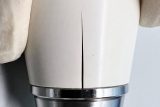Which Autoclave Cycle Do You Need?
Autoclave Cycles
Posted by: Jack Jennings
11 months ago
In the world of moist-heat steam sterilization, two methods stand out: the prevacuum autoclave and the gravity autoclave cycles. Each has a unique process, and understanding these differences is crucial. Not only does this knowledge determine how effectively materials are sterilized, but it also influences what can be sterilized. With this understanding, you can make informed decisions about how your reusable medical device should be tested. So, let’s look into the details of prevacuum and gravity autoclave cycles, exploring their steps, benefits, and key differences to guide you in picking the right method for your testing needs.
Prevacuum Autoclave Cycle
The prevacuum autoclave cycle is a method of sterilization that uses a vacuum system to remove air from the chamber before introducing steam. This process ensures efficient and uniform heat distribution, making it the preferred choice for many types of materials and instruments.
Step-by-Step Process of Prevacuum Autoclave Cycle
Understanding the steps of the prevacuum autoclave cycle is crucial to appreciate its efficiency and effectiveness. The process consists of four distinct phases: preheating, pre-evacuation, sterilization, and post-sterilization.
Preheating Phase
The preheating phase serves to elevate the temperature within the chamber, preparing it for the sterilization process. During this stage, the temperature rises to a range between 190 to 270 degrees Fahrenheit (88 – 132 degrees Celsius). The duration depends on several factors such as the type of autoclave and load volume but generally lasts around 30 minutes.
Pre-evacuation Phase
Next comes the pre-evacuation phase. Here, air is removed from the chamber using a vacuum pump. This step is critical as trapped air can create cold spots that prevent effective sterilization. By creating a vacuum within the chamber, steam can penetrate all areas efficiently.
Sterilization Phase
The sterilization phase then follows. Steam floods into the vacuum in the chamber, ensuring even distribution of heat throughout. Depending on the type of load and its density, this phase typically lasts between 3 to 18 minutes at temperatures ranging from 250 to 275 degrees Fahrenheit (121 – 135 degrees Celsius).
Post-Sterilization Phase
Once sterilization is complete, we move on to the post-sterilization phase. The chamber is slowly depressurized, allowing condensation to drain away. A drying cycle then removes any remaining moisture from the load. This phase is essential to avoid potential recontamination and ensure the items are ready for immediate use or storage.
Key Features and Benefits of Prevacuum Autoclave Cycle
The prevacuum autoclave cycle stands out in several ways, each contributing to its effectiveness and efficiency in sterilization.
Efficiency: The prevacuum cycle employs a method of removing air from the chamber before the introduction of steam. By doing this, it ensures efficient sterilization as the steam penetrates all areas, including the inner part of porous materials or complex-shaped instruments. This method is more effective than allowing steam to push out the air, often leaving pockets of air that may lead to unsterilized spots.
Uniformity: The even distribution of steam and heat within the chamber is another significant feature of the prevacuum autoclave cycle. With the air evacuated first, steam spreads uniformly, ensuring every part of the load is equally exposed to the sterilizing conditions.
Compatibility: This method is particularly compatible with a wide array of materials and instruments. Items such as surgical instruments, textiles, glassware, plastics, and other porous materials can be effectively sterilized using this cycle.
Shorter Cycle Time: One notable benefit of the prevacuum autoclave cycle is time efficiency. Compared to other methods, it has a shorter cycle time due to its rapid air removal and fast heating process. This feature not only saves time but also boosts productivity by enabling more loads to be sterilized within a given timeframe.
By understanding these features and benefits, it becomes clear why many opt for this sterilization process when dealing with specific types of materials and instruments.
Gravity Autoclave Cycle
The gravity autoclave cycle is a method used to sterilize instruments and materials effectively. This process relies on the natural displacement of air, unlike the pre-vacuum method which uses a vacuum pump to remove air from the chamber.
Step-by-Step Process of Gravity Autoclave Cycle
The gravity autoclave cycle follows a series of steps that ensure proper sterilization.
Preheating Phase
The preheating phase is designed to heat the autoclave chamber and its contents uniformly. This phase may last up to 30 minutes depending on the size of the autoclave and the material being sterilized.
Air Removal Phase
After preheating, the next step is air removal. Unlike the prevacuum cycle, where a vacuum pump removes air, the gravity cycle relies on steam displacement. As steam enters the chamber, it pushes down and forces out lighter, cooler air through an exhaust port.
Sterilization Phase
Once all air has been displaced from the chamber, we enter the sterilization phase. It’s here that superheated steam at a temperature of about 121°C (250°F) is introduced for a period ranging typically between 15 and 30 minutes, depending on the load and type of material being sterilized.
Cooling Phase
After sterilization, there’s a crucial cooling phase where temperature is gradually reduced to avoid any sudden drop that might damage delicate items. The door remains closed until temperatures are safe for handling.
This step-by-step process shows how gravity autoclave cycles work efficiently without reliance on mechanical aids for air removal. The simplicity of this cycle makes it ideal for general laboratory and some general dentistry instruments where the sterilization requirements are not as critical, and the devices are less complex.
In our next section, we’ll delve deeper into key features and benefits that make Gravity Autoclave Cycles an optimal choice for different scenarios.
Key Features and Benefits of Gravity Autoclave Cycle
The gravity autoclave cycle is appreciated for its simplicity. This process is straightforward, making it ideal for situations requiring less complex sterilization procedures. The steps involved in a gravity cycle are simple to follow, ensuring a smooth and uncomplicated process.
When it comes to compatibility, the gravity autoclave cycle is versatile. It can effectively sterilize a wide range of materials and instruments. This includes glassware, surgical instruments, laboratory equipment, and other items that can endure high-temperature steam sterilization.
Another notable feature is the gentleness of the gravity cycle. It’s a perfect choice for delicate items (such as electronic devices) that might be damaged by the intense vacuum in prevacuum cycles. The gravity cycle uses steam displacement as opposed to vacuum-induced air removal, thus causing less potential harm to sensitive tools or materials.
Finally, the gravity autoclave cycle stands out due to its reliability. It has been around for decades and continues to be trusted by many professionals in various fields. It’s simple yet effective method ensures consistent results each time it’s used.
In essence, the gravity autoclave cycle’s key features – simplicity, compatibility, gentleness on delicate items, and reliability – make it a valuable tool integral to effective sterilization processes.
Comparison of Prevacuum and Gravity Autoclave Cycles
When assessing the differences between prevacuum and gravity autoclave cycles, it’s essential to examine their key characteristics.
Prevacuum Autoclave Cycle: This method is recognized for its efficiency and uniformity. It excels at removing air from the chamber before the sterilization phase, ensuring an even distribution of steam and heat. The result is a thorough sterilization process that is particularly effective for dense loads and/or complex devices (with crevices, cavities, cannulas, etc.). However, certain materials or instruments may not be compatible with this cycle due to the high temperatures and pressure gradients involved. Prevacuum autoclaves are costly to purchase and operate, but they are the preferred means of steam sterilization in hospitals and surgery centers. This is due to their higher efficiency and effectiveness when processing a wide variety of complex surgical instruments.
Gravity Autoclave Cycle: This method is recognized for its simplicity in less demanding applications and gentleness on delicate items. It uses natural air displacement during sterilization, which can be a more lenient process for sensitive materials or devices. Despite this, it might not achieve the same level of sterilization as the prevacuum cycle, particularly for more challenging loads. Gravity autoclaves are common in general dentistry clinics due to their low cost and less demanding loads. They are typically only used in hospitals and surgery centers for devices that cannot tolerate the harsher conditions in a prevacuum autoclave.
In terms of application, choosing between these two cycles often depends on specific needs:
- For dense loads or complex devices: A prevacuum cycle is typically recommended as it ensures a comprehensive penetration of steam.
- For delicate items or sensitive materials: The gravity cycle can be a safer option due to its less aggressive nature.
- For standard procedures with typical loads: The prevacuum cycle offers a quicker turnaround time and greater assurance of complete steam penetration of crevices and cavities.
Conclusion
In essence, both autoclave cycles serve essential roles in sterilization processes across various fields. By understanding their unique features and benefits, engineers can make informed decisions about which method best suits their particular testing requirements. For reusable instruments, it is important to conduct a reprocessing validation to assess the effects of repeated exposure to cleaning and sterilization processes. It is equally important that your testing utilizes the sterilization method (prevacuum or gravity) that will be used in clinical practice. As we have described here, the two methods are not the same. The method selected for your reprocessing instructions and validation testing must be the same method that your product will be exposed to during clinical use, or the test results may give you a false indication of true clinical performance. Remember, an informed choice between prevacuum and gravity autoclave cycles is crucial for your sterilization success.
At SteriLogix, our sole focus is conducting high-cycle durability tests that reflect real-world reprocessing conditions. We specialize in helping OEMs validate the longevity of their devices when exposed to repeated cleaning and sterilization cycles. Contact us directly to discuss your specific testing needs by filling out the form on our Contact Us page.
Ready to Verify the Life Cycle of Your Reusable Medical Devices?
Utilizing our Clinical Reprocessing Cycles (CRC) testing provides a technical, non biased, certified validation so that you can be confident your materials and products are able to withstand the rigors of reprocessing.

